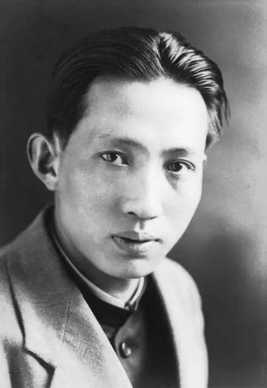Fu Bao Shi
Fu Baoshi (October 5, 1904 – September 29, 1965) was born in Nanchang, Jiangxi Province, with ancestral roots in Zhangtang Village, Beigang Township, Xinyu (formerly Xinyu County), Jiangxi. His original name was Changsheng, his formal name was Zhongzhou, his courtesy name was Qingyuan, and his academic name was Ruilin; he adopted the art name “Bao Shi Zhai Zhu Ren,” with “Bao Shi” derived from the Qing-dynasty painter Shitao [47]. He was a modern Chinese painter, art historian, calligrapher, and art educator, regarded as a representative figure of the “New Landscape Painting” movement.
His major paintings include “Qu Yuan,” “The Land Is So Magnificent,” “The Spectacle of the Coal Capital,” “Snowy Forests,” “Tianchi Forest Sea,” “Miruo Flying Springs,” and others. [1-2]
In 1932, upon the recommendation of Xu Beihong, he went to Japan for further studies, studying Eastern aesthetics and art history under Kinbara Seigo. In 1935, he returned to China and taught Chinese art history at Nanjing Central University. After the outbreak of the War of Resistance Against Japan, he assisted Guo Moruo in promoting cultural propaganda for the war effort; in 1939, he settled in the western suburbs of Chongqing beneath Jinguang坡 and taught at both Central University and the National Academy of Art. In 1946, he returned with Central University to Nanjing. [48] In June 1951, he was elected as a standing committee member of the Nanjing Federation of Literary and Art Circles; in September 1953, his works “Forcing the Crossing of the Dadu River” and “Still Joyful at the Thousand Li of Snow on Minshan Mountain” were exhibited at the “First National Exhibition of Chinese Paintings”; in May 1954, he was elected as a council member of the East China Artists Association; in September, he was elected as a member of the Jiangsu Federation of Literary and Art Circles; in April 1955, he was elected as a member of the First Committee of the Jiangsu Provincial Committee of the Chinese People’s Political Consultative Conference; in March 1960, he became President of the Jiangsu Provincial Institute of Chinese Painting; in April, he was elected Chairman of the Jiangsu Branch of the China Artists Association and Vice President of the Jiangsu Society for the Study of Calligraphy and Seal Carving; in August, he was elected Vice Chairman of the China Artists Association; in October 1964, his work “Today’s Tiger Crouching and Dragon Coiling Surpasses the Past” was exhibited at the “East China Region Exhibition of the National Art Exhibition,” and he was also elected Vice President of Xiling Seal Engravers’ Society; in December, he was elected as a delegate to the Third National People’s Congress of the People’s Republic of China; on September 29, 1965, he passed away in Nanjing, Jiangsu, at the age of 62.

 中文
中文  en
en 
